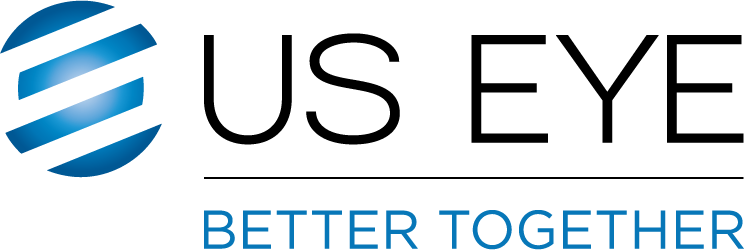
Why you should consider adding pediatrics to your practice

Dedicating part of your practice to a pediatric patient base allows you to have fun, as well as continue growing your practice.
Pediatrics is only part of my practice, but it’s my favorite part.
Some think that if you are a pediatric optometrist, then all your patients are kids. However, unlike dentistry and pediatric primary care, having a partial pediatric practice can work well alongside caring for the rest of your patient base.
There are great benefits for adding pediatrics to your schedule: kids can be fun, they don’t complain about their other doctors, they don’t talk politics, and they don’t think my fees are too high.
I’ve been in practice for 35 years. Unlike a pediatrician’s office—where patients “age out”—our pediatric patients become adult patients. Many of them go on to have kids of their own and, as a results, our practice continues to grow.
Parents of pediatric patients are very loyal; they often seek out other parents for recommendations. Though many of our pediatric patients are private pay or have vision plans that we do not accept, parents want what they perceive as best for their children. I have found that parents—more than any other patients—will trust your recommendations.
Expanding and equipping for pediatrics
To expand your practice into the world of pediatrics, I suggest minorly redecorating one of your exam rooms. We framed art created by my own kids over the years, and we still use the room for adult brief checks and contact lens follow-up. You don’t have to dedicate the room to strictly pediatrics. Plus, adult patients who are examined in this room will often ask about having their own child evaluated.
Equipping the exam room can be simple. We have a manual phoropter (easier for retinoscopy), Heine slit lamp head for a direct handle, BIO, retinoscopy racks, and tests for color perception and depth perception, as well as forced choice acuity charts for non-verbal patients.
In addition, we have a simple screening test to look for saccadic deficits when indicated. Finger puppets are great fixation tools for tracking versions and cover testing. I draw a ‘smiley face’ on a cotton swab for fixation, which makes the kids smile.
To minimize the time spent in the chair, I tend to let kids roam where they want while I’m opening the chart and reviewing the history with their parents. Sitting on a parent’s lap is fine, as well. For young kids, I ask them to sit “criss-cross applesauce” so their feet aren’t dangling and they squirm less.
Talk to the child at their level. It’s OK to be a little goofy to get them to loosen up and use “baby talk.” And I have found that telling the child what you’re doing relieves tension.
My script goes something like this:
“I’m an eye doctor, so I’m going to make sure your eyes see well and work together. When you come to my office, you’ll never ever get a shot or a finger stick. You get to keep your clothes on, and you don’t have to go to the bathroom in a cup because I think that’s gross.”
The goal is to keep them at ease.
Performing the exam
Some doctors insist on using cycloplegia on every child—I do not. If my autorefraction and retinoscopy findings are consistent and make sense with the visual acuities, I usually do not use cycloplegic drops.
For dilation, I prefer to use hydroxyamphetamine hydrobromide, tropicamide (Paremyd, Akorn) because it doesn’t sting, and it works great on young eyes.
To instill the drops, I tell the child, “I’m going to lay this chair down flat, like you’re laying down, and then you can close your eyes. I have some drops that will feel cold, and they are the kid drops.”
While they are still lying down, I allow enough time to let the drop work in through the lids.If they rub their eyes, it’s even better. After they open their eyes, I give them a couple of tissues; I raise them up and then I keep handing them tissues until they start to giggle. Then I give them another dozen more, and sometimes I’ll empty the whole box. They are laughing, and so are the parents, and they have already forgotten about the drops.
For the external exam, I use a handheld slit lamp head that fits on my direct handle. For the internal exam, I use a binocular indirect ophthalmoscope (BIO) with a red-free light and a finger puppet for fixation.
The exams need to be fast. Children only give you borrowed time before they have had enough of you. I tend to work quickly, and chart afterwards. Parent will appreciate a quick exam as well.
After the exam
When eyeglasses are indicated, I review the wearing schedule with the parent and my recommendations for materials.
For new wearers, I ask the parents to bring their child back in for a no-charge ‘acuity check’ in 6-8 weeks to make sure they are adapting to their glasses and using them correctly. I let them know if I measure a different prescription, and if the glasses were purchased from us, I will make new lenses for free if there’s a difference. The visit is quick and greatly appreciated, and helps keep prescriptions from walking.
Conclusion
Consider expanding into the world—and fun—of pediatric patients. You can even set your own age boundaries. Our practice starts at age 3, and I refer younger patients to an optometric colleague who sees infants and toddlers, as well as refer to another optometric colleague for vision therapy when indicated. Other doctors in your area will be receptive to referring you their youngsters. We also have a steady stream of pediatric referrals from ophthalmologists.
Growing a pediatric practice is a great next step for continued success.
Bradley Middaugh, OD, graduated from Wake Forest University and earned his doctorate at the University of Alabama at Birmingham. He has been in private practice since 1988 and founded The Fort Myers Eye Center in 1993. In 2020, he joined the Center for Sight team to offer his patients direct access to some of the finest cataract, LASIK, glaucoma, cornea, retina, and oculo-plastics specialists in Southwest Florida. He can be reached at: bmiddaugh@centerforsight.net
Newsletter
Want more insights like this? Subscribe to Optometry Times and get clinical pearls and practice tips delivered straight to your inbox.













































.png)


